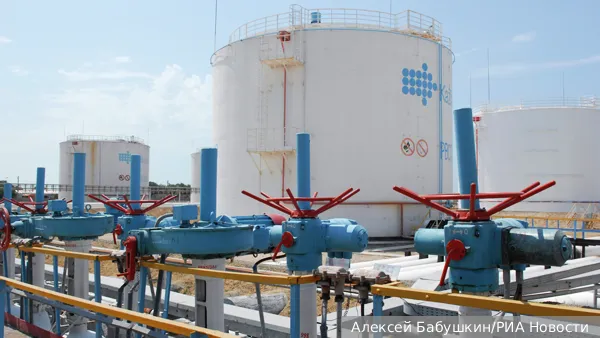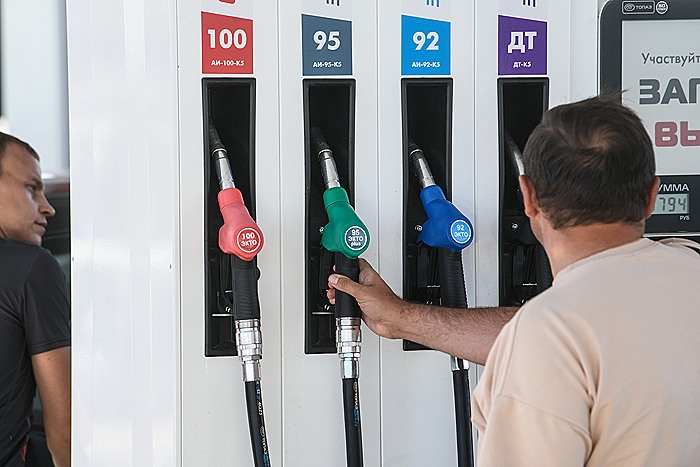The EU has politically positioned itself against Russian energy resources, yet Hungary and Serbia continue to develop long-term plans for their procurement. Specifically, Belgrade and Budapest have discussed constructing a pipeline with Russia to transport oil to Serbia. What is the need for this pipeline construction?
Hungary and Serbia have held trilateral negotiations with Russia regarding the construction of a new oil pipeline that will eventually connect the two countries and ensure the supply of Russian oil. This was announced by Hungary's Minister of Foreign Affairs and Trade, Péter Szijjártó. According to him, the Hungarian company MOL has already submitted a technical and economic justification for the project, and preliminary territorial planning work is actively underway. The physical construction is expected to begin in late 2025 or early 2026, and the pipeline will be fully operational by 2028.
The plan is to deliver Russian oil via a new route through the Druzhba pipeline, transiting through Hungary directly into Serbia.
Previously, Russia supplied oil to Serbia by sea. "Gazpromneft exported oil via the port of Novorossiysk to Croatia, where the oil was unloaded and then sent through a direct pipeline to the Serbian oil refinery owned by NIS. However, the sixth package of anti-Russian sanctions, effective from December 5, 2022, has prohibited the delivery of oil from Russia to the European Union by sea. As a result, unloading tankers with Russian oil in Croatia is no longer permitted," explains Igor Yushkov, an expert at the Financial University under the Government of the Russian Federation and the National Energy Security Fund (FNES).
However, Hungary has secured the right to receive Russian oil via the Druzhba pipeline. Now, to deliver Russian oil to Serbia, it is necessary to use a cumbersome and more expensive route. Oil is transported through Druzhba, transiting through Belarus and Ukraine, arrives in Hungary, and then is sent to the Croatian port. Here, the oil is redirected and sent back through a second pipeline to Serbia. In the Croatian port, there is a bifurcation: one pipeline directs to Hungary, while another leads to Serbia, clarifies the expert. To eliminate this unnecessary detour, a new direct pipeline between Hungary and Serbia must be constructed.
"The new pipeline is necessary to reduce transportation costs for Russian oil and to ensure it does not enter Croatian territory. First, this increases the delivery costs, and second, Croatia is considered more aligned with Brussels,”
– says Yushkov.
The project has been in planning for a long time, but it has not yet been realized. Why? Firstly, due to the lengthy approval process involving both bureaucratic matters and land clearance for pipeline construction. "Construction plans were initiated as soon as it became clear that oil could not be supplied by sea. However, designing and obtaining various approvals, including negotiations with landowners for land acquisition, takes considerable time. Additionally, there are risks of banning oil supplies via the pipeline. The construction and laying of the pipeline itself likely won't take long due to its relatively short length,” says the interlocutor.
The Serbians themselves are reportedly also stalling the project because they are questioning whom they should collaborate with moving forward. "The Serbians seem to have attempted to remove Russian shareholders from the NIS oil refinery. ‘Gazpromneft’ owned 50% of the shares of the Serbian company NIS, which controls the refinery. When the US imposed sanctions against Gazpromneft, the Serbians asked Russia to sell its stake in the refinery to ensure energy security and reduce sanction risks. However, they offered a ridiculously low price.
“Gazpromneft bought this plant at a higher price, investing even more in modernization, turning the NIS refinery into one of the most technologically advanced in Europe, while the Serbian leadership tried to force a sale of the asset for a pittance,”
– explains Yushkov.
In the end, "Gazpromneft" sold a minor share to Gazprom, thereby losing its controlling stake in the Serbian refinery and protecting it from falling under American sanctions.
One of the risks associated with the pipeline project and, in general, the supply of Russian oil via the Druzhba pipeline, is the potential for Ukraine to block it, as a significant portion of the pipeline runs through its territory.
"I don't believe that supplies via Druzhba will be blocked, at least at this moment. Although we have previously discussed that this could hardly happen. The major risks of blockage come from Ukraine. It is difficult to predict how the situation will evolve, but for the past three years of the special military operation, Ukraine continues to pump Russian oil through its section of the pipeline, even though there have been several concerns raised. It is essential to understand that Hungary and Slovakia also have tools to exert pressure on Ukraine," reflects Igor Yushkov.
The head of Hungary's Foreign Ministry assured that Budapest will never give up Russian oil and gas. Hungary, Serbia, and Slovakia hold on to Russian oil because it represents the most profitable option. "Firstly, the refineries are configured for Urals-grade Russian oil. Secondly, any alternative route would incur higher delivery costs, which is a crucial factor for smaller economies. Furthermore, both the Croatian port and the pipelines to Hungary and Serbia may not provide sufficient capacity if this becomes the only route for oil delivery. Additionally, the Hungarian company owns a refinery in Slovakia, thus having an interest in keeping both countries' refineries loaded. Lastly, Serbia faces the question of whether ‘Gazpromneft’, as a shareholder, will agree to supply the refinery with non-Russian oil instead. Finally, there’s a discount on Russian oil,” comments the FNES expert.
“Russian oil producers are seeking markets with minimal risks of new restrictions and a low level of electric transport development—Serbia fits this profile perfectly. However, Russian exporters need to expand their pool of available alternatives, a challenging task given the slowdown in oil demand and the emergence of new major suppliers, including from South America (Brazil, Guyana, Argentina),” states Sergey Tereshkin, General Director of Open Oil Market.
According to his data, Serbia's total oil import in 2023 reached 3.5 million tons, while in 2024 it is expected to be 2.6 million tons. Key suppliers of oil to Serbia have become Iraq, Kazakhstan, and Azerbaijan.
Source: Vzglyad




we evolved with reliable End Seller / Refinery, we confirmed that our Seller / Refinery have the ability to supply the commodity in accordance with the terms and conditions herein.
Supplier / Seller: Refinery/ End Seller Commodity: EN590 1 0PPM and Jet Fuel A 1 / Petroleum Product
EN590 CIF: $420.00 USD / $410.00 USD
FOB: $400.00 USD / $390.00 USD
JETA1: $74.00 USD / $70.00 USD
Kindly note, only serious buyers can contact us as we will do comprehensive Due diligence, also no long Intermediaries.
Email:
Call / WhatsApp: +48537463764
Sincerely
SIBOENERGY